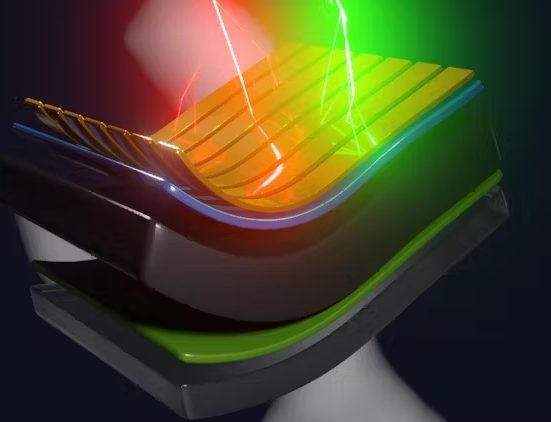A team of researchers led by Dr. Sayan Das with Professor Venimadhav Adyam from the Cryogenic Engineering Center at IIT Kharagpur, India, and their colleagues Professor Vilas Pol from Purdue University, IN, USA, have achieved a breakthrough in the development of sodium metal batteries. . His groundbreaking work, published in the peer-reviewed journal. Energy advancesintroduces a new near-solid-state electrolyte that promises significant advances in battery safety and performance.
Traditional lithium-ion batteries (LIB) have dominated the market for decades due to their high energy density and reliable performance. However, the limited supply and price fluctuations of lithium have prompted the search for alternative solutions. Sodium ion batteries (SIBs) have emerged as a promising candidate as they utilize the abundant and cost-effective sodium resources available globally. Despite this potential, SIBs have faced challenges related to safety and stability, particularly due to the flammable nature of conventional liquid electrolytes.
The team at IIT Kharagpur and Purdue University has addressed these issues by developing a cost-effective approach on quasi-solid state electrolytes (QSSE) with custom-made nonwoven support. This new electrolyte, based on poly(vinylidene fluoride-co-hexafluoropropylene) (PVDF-HFP), offers a non-flammable, flexible and ultra-stable solution for sodium metal batteries. “Our cost-effective approach uses a cheap textile mask (non-woven mask) coated with PVDF-HFP and soaked in an optimized sodium-based liquid electrolyte to make it non-flammable and practically applicable for sodium battery applications,” said Dr . You give.
The QSSE demonstrated notable properties, including improved conductivity at room temperature and significant sodium ion transfer. When tested in a sodium metal cell with Na3V2(MAIL4)3 (NVP), the QSSE-based battery delivered excellent discharge capacity at high rate and exhibited exceptional capacity retention of nearly 99% after 2500th cycles. This indicates a negligible loss of capacity during the long-term cycle, a critical factor for practical energy storage applications.
One of the most important advantages of this new electrolyte is its improved safety profile. Unlike conventional liquid electrolytes, which can be highly flammable and pose serious fire and explosion risks, the QSSE developed by the team is inherently non-flammable. This property was confirmed by an open flame test which showed that the QSSE did not ignite, making it a much safer choice for large-scale energy storage systems.
The researchers also highlighted the scalability of their approach. “Our simple, scalable and cost-effective approach to developing QSSE is shown schematically and the detailed procedure is described in the supporting information,” said Dr. Adyam. This scalability is crucial to the widespread adoption and commercialization of sodium metal batteries, as it ensures that the production process can be easily implemented on a large scale.
The successful development and testing of this new electrolyte marks an important step forward in the search for safer and more efficient energy storage solutions. The research team is optimistic about the future applications of their work, noting that their findings could pave the way for the development of next-generation sodium metal batteries that are not only safer but also more cost-effective and sustainable.
“Future work will focus on further optimizing the electrolyte composition and exploring its applicability in other battery configurations,” said Dr. Pol. “Our goal is to develop a range of high-performance, safe and efficient energy storage solutions.” that can meet the growing demands of the global energy market in a sustainable way.
Magazine reference
Sayan Das, Vilas G. Pol and Venimadhav Adyama. “Non-flammable quasi-solid electrolyte with custom-made non-woven support enables ultra-stable sodium metal battery.” Energy Advances, 2024. DOI: https://doi.org/10.1039/D3YA00435J
About the authors

Dr. Sayan Das He is a postdoctoral researcher at Purdue University, Indiana, specializing in energy storage technologies. With a Ph.D. A Bachelor of Science from Jadavpur University and with extensive experience in lithium and sodium ion batteries, Dr. Das excels in electrolyte formulation, materials characterization and electrochemistry. His work includes notable contributions to the development of safer electrolytes for lithium batteries and quasi-solid-state sodium ion systems. Currently, he leads and collaborates on projects aimed at promoting battery technologies for various applications. Dr. Das has published 19 peer-reviewed articles and has three issued patents.


Vilas G. Pol is a Professor of Chemical Engineering at Purdue University, IN, USA. He was author/co-author of more than 270 research publications (h-index 58), inventor of 20 issued US patents and more than 20 applications. Purdue University honored him with Outstanding Engineering Teachers, Most Impactful Inventors, Seed for Success, Bravo, and Purdue Faculty Scholar awards. He has given hundreds of invited, keynote and plenary talks, including 'TEDx'. He is honored with more than 35 prestigious awards from professional societies AIChE, ACS, MRS, ACerS, TMS and Carbon. He is a Fellow of the Royal Society of Chemistry, MASc (India) and IIAM (Sweden), as well as holding two Guinness World Records.M.T..


Venimadhav Adyam is a Distinguished Professor at the Center for Cryogenic Engineering, IIT Kharagpur. He received his Ph.D. in 2001 from the Indian Institute of Sciences, Bangalore, focusing on the properties of thin films of perovskite-related oxides. His academic career is characterized by extensive international experience, having conducted research at Pennsylvania State University and the University of Cambridge. His research spans a variety of areas including quantum materials, multiferroics, spintronics and advanced battery technologies such as rechargeable sodium ion and thin film batteries, and he has played a pivotal role in establishing advanced research facilities at IIT Kharagpur , improving their capabilities. in magnetization measurement and nanolithography. Venimadhav has received several prestigious awards and honours, including the MRSI Medal and the DST FastTrack Young Scientist Project. He is a member of PERM, member of MRSI India, Magnetic Society of India and Cryogenic Council of India. His contributions to science are substantial, including sponsored research projects, publications in peer-reviewed journals, and book chapters.













Leave feedback about this